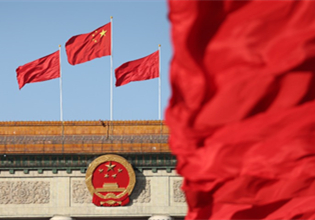Inner Mongolia’s industrial economy shows positive trend
Since 2020, the industrial economy of North China’s Inner Mongolia autonomous region has developed steadily and shown a positive trend.
In the first three quarters of last year, the added value of industrial enterprises above designated size in Inner Mongolia fell 1.9 percent year-on-year.
Among the 41 industry categories, 26 industries increased their added value year-on-year. The added value of industrial strategic emerging industries above designated size, the modern coal chemical industry and non-coal industry increased by 5.0 percent, 3.3 percent and 5.1 percent, respectively.
As an essential resource and energy source in the country, Inner Mongolia promotes the development of resource-based and energy-based industries to high-end and deep processing, and the transformation and upgrading of traditional industries continue to accelerate.
Statistics show that the on-site coal conversion rate of Inner Mongolia has reached 39.8 percent, and the proportion of coal-fired power and coal chemical integration has reached more than 90 percent.
Inner Mongolia has also established a rare earth functional material innovation center, and the local conversion rate of rare earth raw materials increased to 75 percent.
Meanwhile, the installed power capacity of Inner Mongolia has increased from 103 million kilowatts at the end of 2015 to 136 million kilowatts.
The installed capacity of new energy sources such as wind power and solar power accounted for 33 percent of the autonomous region's total installed power. More than 18 percent of Inner Mongolia's electricity consumption comes from new energy, equivalent to reducing 72 million tons of carbon dioxide emissions each year.
The average utilization rate of wind power and photovoltaic power generation has reached 94 percent and 97.3 percent, respectively.



 Print
Print Mail
Mail





